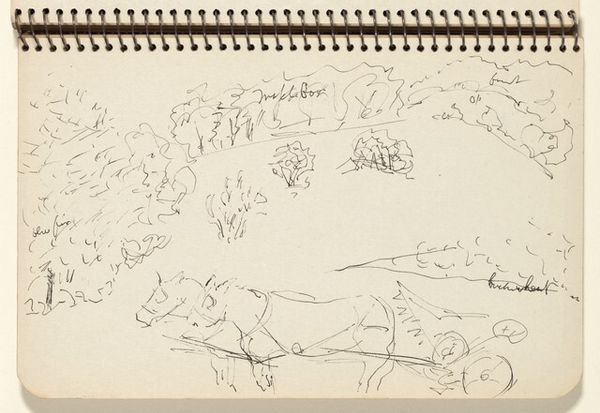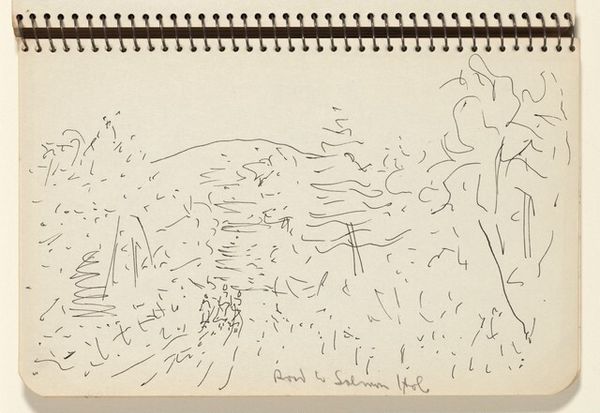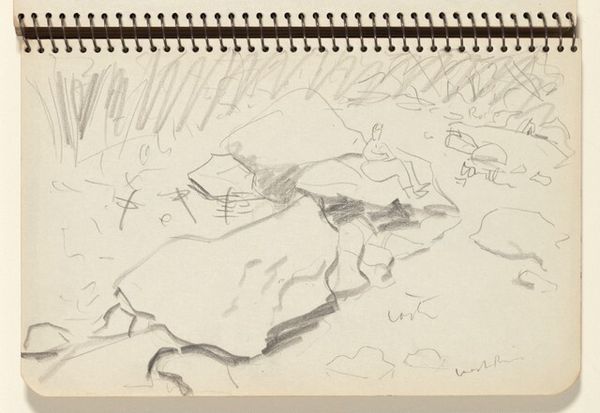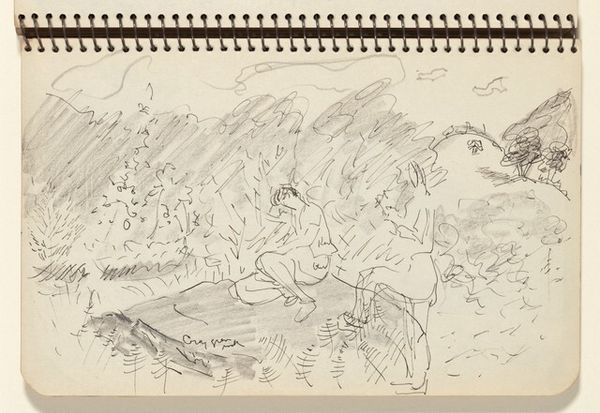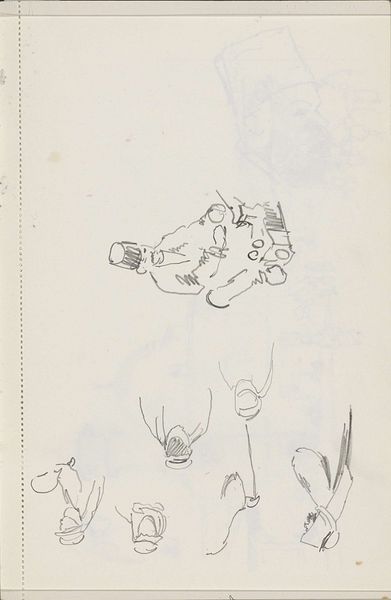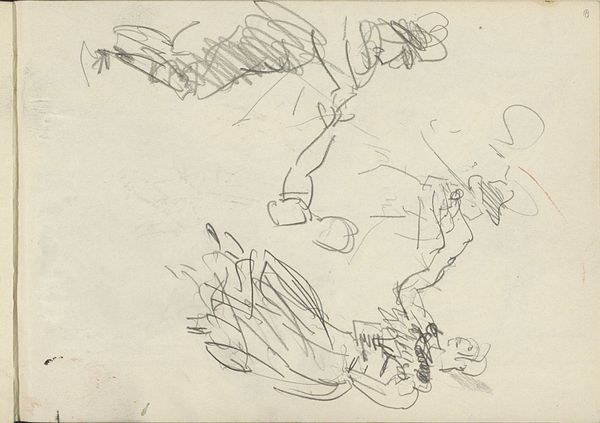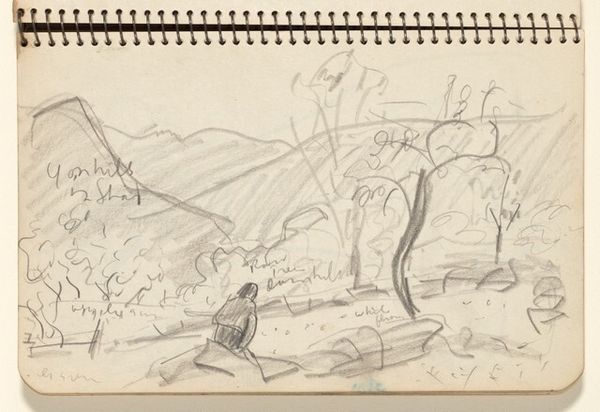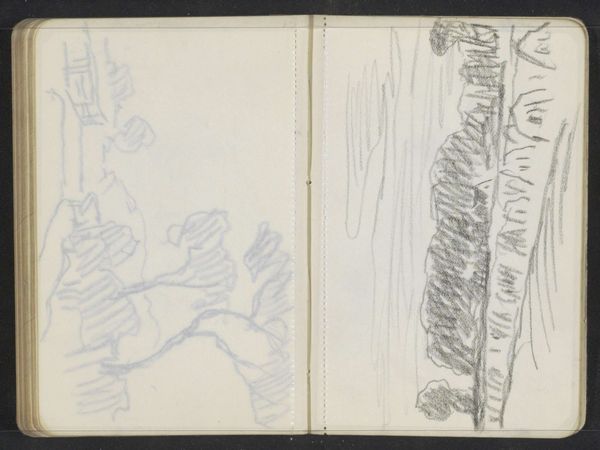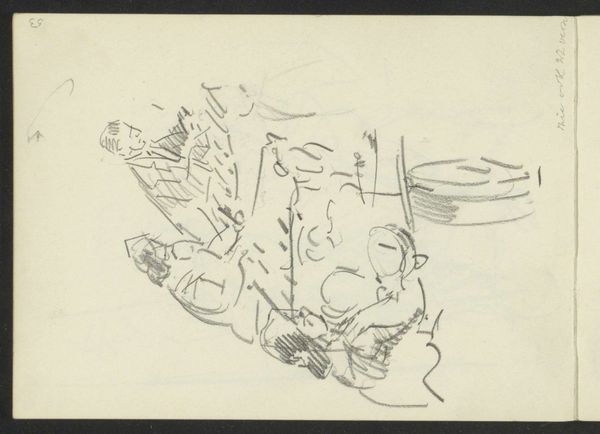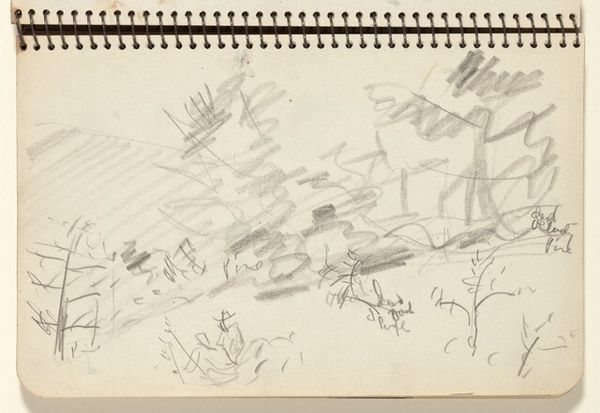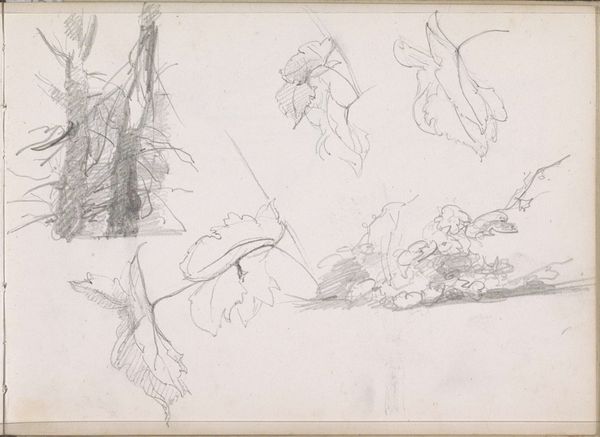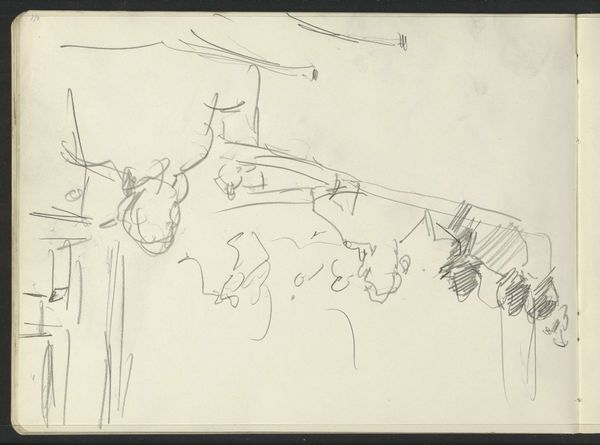
drawing
#
drawing
#
landscape
Dimensions: overall: 12.8 x 20 cm (5 1/16 x 7 7/8 in.)
Copyright: National Gallery of Art: CC0 1.0
Editor: Here we have Milton Avery’s "Vermont Farm," created in 1943. It's a drawing that, at first glance, feels incredibly raw and immediate, almost like a fleeting impression captured on paper. The sketch-like quality gives it a certain charm. What's your take? Curator: What I see is a document of Avery’s interaction with the landscape and life outside of the artistic circles of New York. While Abstract Expressionism was gaining momentum, driven partly by a desire for distinctly American art that separated itself from European tradition, Avery remained committed to landscapes and domestic scenes. How does this seemingly simple sketch relate to the wider context of art during World War II? Editor: That's a good point. It does feel very separate from the intensity you might expect during that period. Was he consciously resisting the trends of the time, or was he just focused on his own vision? Curator: It’s more complex than simple resistance. Think about the politics of imagery. During wartime, art was often explicitly propagandistic or focused on themes of trauma and heroism. Avery's choice to depict a peaceful, rural scene, perhaps even a nostalgic one, can be seen as a subtle commentary. What would it have meant to turn towards the pastoral at a time of global upheaval? Was it an escape, or a quiet assertion of the enduring values of American life? Editor: So, it's less about ignoring the war and more about offering an alternative vision, a reminder of what was worth fighting for? Curator: Precisely. The drawing’s seeming simplicity belies a deeper engagement with the social and political climate. Even the act of sketching in situ connects to a longer art historical tradition of finding beauty and significance in the everyday world. It also reflects a move to simplify forms and use the immediate and visible to ground Avery during uncertain times. Editor: That really changes how I see it. It's not just a quick sketch; it's a statement. Thanks for helping me see past the surface! Curator: My pleasure! It’s in that dialogue between artwork and its context that the real magic happens.
Comments
No comments
Be the first to comment and join the conversation on the ultimate creative platform.
